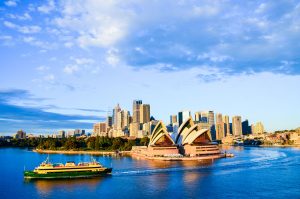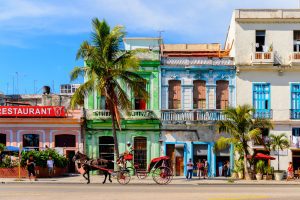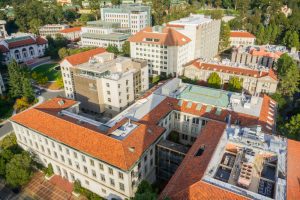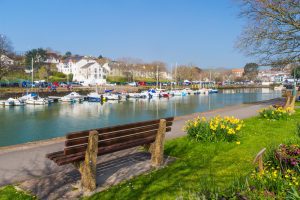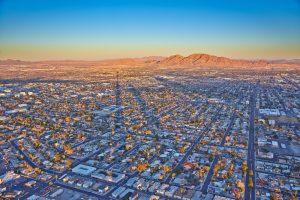It’s common knowledge that Canada is considered to have the friendliest people and the safest cities, so it’s only natural to consider living in Canada if you have a family or are thinking of starting one.
The question is, which city is the best place to live for families? Beyond safety and the neighborhood people, several factors still come into play when choosing the most suitable location to raise a family.
For the most part, families consider several variables, including:
- Cost of living
- Education
- Employment opportunities
- Proximity to playgrounds
- Infant mortality rate/overall health of the city
- The average age of the city – to determine whether it’s a child-friendly city
- Mom groups and support groups in the area
- Healthcare
We have to admit, there’s no perfect place to raise a family. No matter which country you may live in, the best place depends on your preferences – particularly, your wants and needs as a family. When the city’s features and your preferences are harmonized, you’ve probably found the perfect city for your family.
Whether you’re looking for a place with top-notch healthcare, pristine outdoor activities, a good education system, or an affordable cost of living, Canada has many great places for your family to create wonderful memories and start ticking every milestone.
To make your decision a lot easier, we’ve rounded up our top five cities in Canada that are appealing to families based on the quality of life, job opportunities, education, recreation, and transportation. Keep reading to learn more.
Table of Contents
Quebec City, Quebec
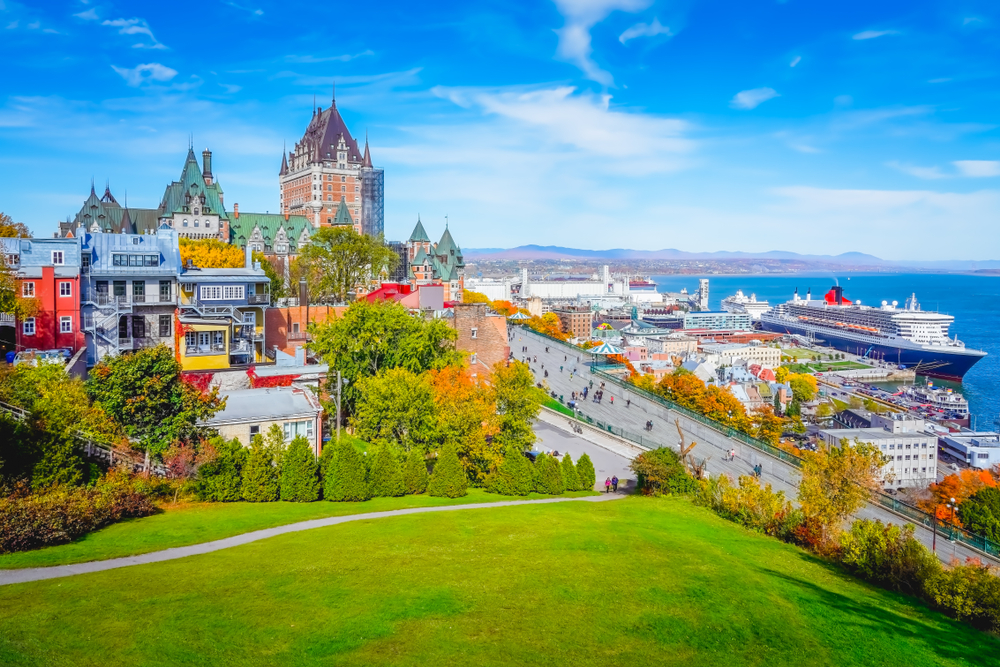
The first on our list is Quebec City, the capital city of Quebec, with a population of more than 500,000. It’s a French-speaking province, with rich history and culture. You’ll find tons of theatres, museums, and many historical places in the area.
In terms of weather, Quebecers enjoy all four seasons – but there’s generally no need to worry about the winter snow, as Quebec has the ultimate snow-removal system.
Quality of Life
Quebec City is one of the largest cities in Canada and is considered to be the best place for raising a family, with its incomparable quality of life. Its affordable housing costs, top-notch healthcare system, and low crime rates make it a wonderful place to live.
Moreover, the cost of living is comparatively low, as you may shell out an average of CAD 70,000 per year for household expenditures including food, housing, education, and recreation, to name a few.
On top of that, healthcare in Quebec is free of charge as part of Quebec’s provincial health insurance plan.
As wonderful it may seem, however, keep in mind that French is predominantly used in the region so you might need to brush up on your French language skills. Learning French is essential for day-to-day communication at stores, work, and most especially in schools for your children since French is the language curriculum.
Job Opportunities
Being the 7th-largest center in Canada, Quebec City has a booming economy. Employment opportunities are thriving in the manufacturing and service industries.
Manufacturing products can range from paper, food, electronics, and wood. Additionally, their central business center is found on Parliament Hill and Boulevard Laurier, where law and accounting firms are situated.
The unemployment rate is about 4%-8%.
Education
No matter which neighborhood you choose to live in, you’ll find affordable primary and secondary schools. Apart from this, public schools for primary and secondary education are free of charge.
Moreover, Quebec is among the cities with the highest graduation rates compared to other regions in Canada.
Recreation
The most popular way to bond with your family is by hanging out in Quebec’s national parks and natural attractions. Its scenic beauty is a must-see and these parks normally have camping activities, wildlife observatories, and hiking trails. In every season, there’s always an activity to enjoy with your little ones. Go hiking and cycling in autumn or go skiing and snowboarding in the winter.
Transportation
Getting around Quebec City is made easy via car, bus, train, and bike. You’ll find bike paths that are safe and convenient. Quebec’s highway network is well maintained which allows you to travel faster from one place to another. In terms of commute, Quebec has a well-developed public transportation system with frequent bus intervals and major links to various bus networks and trains.
Ottawa, Ontario

Ottawa is located in the southern-eastern part of Ontario with a population of 994,000. It is the 4th largest metropolitan city and ranks as the second cleanest city in Canada.
Ottawa is a bilingual city that typically uses both English and French in most government jobs. The people living in Ottawa are Canadians and immigrants, mostly from the Philippines, China, and other Asian countries.
With regards to weather, you’ll have to learn to embrace it; the weather can be both extremes – quite humid in the scorching hot summer, and too cold for too long in the winter. Spring is sweet but short, as it only lasts from April to May.
Quality of Life
Ottawa ranks as the 14th highest city with the best quality of life in the world. It’s a safe and quiet city, with crime rates lower than average.
Although you may find affordable housing because of nearby local universities, food and groceries can be more costly. However, housing is much lower in Ottawa compared to Vancouver and Toronto.
Ottawa has one of the highest household incomes in Canada, averaging about CAD 105,000/year. Other key features you may notice are Ottowa’s well-developed amenities, great economy, and high-quality healthcare.
Job Opportunities
A prosperous city with a robust economy, Ottawa is focused on two major industries: technology and public service. It’s dubbed the “Silicon Valley of the North” for being a global tech hub for tech companies including IBM, Adobe, and CGI.
These industries offer high-paying jobs, which contribute to Ottawa’s 37% GDP. Aside from government and technology sectors, work opportunities can be found in tourism, healthcare, and manufacturing.
The unemployment rate in Ottawa averages about 5% to 6%.
Education
Aside from great work opportunities, Ottawa is home to prestigious universities. If you want the best education, Ottawa is the place to be, as it’s known to be the smartest city in Canada. You’ll find the best universities here including the University of Ottawa and Carleton University.
It takes the top spot for producing the highest percentage (31.5%) of university degrees. Moreover, daycare for your little ones is one of the cheapest, with an average monthly cost of $1,000.
Recreation
Ottawa has one of the most family-friendly events and recreational places, in particular, the Rideau Canal – which gets filled with boats for summer fun, and becomes an outdoor skating rink for families to enjoy in the winter.
At the heart of the city, you’ll find several establishments for entertainment including Parliament Hill and the National Gallery of Canada.
Transportation
You won’t find it hard getting to places with the available buses and the O-train. Taking the bus can bring you to downtown Ottawa, whereas the O-train is more suitable for north/south travels.
It’s easy to get around with your own transportation, including bicycles and cars. Ottawa has more than 170km of bike pathways, and the roads are not as crowded compared to Toronto.
Saint John, New Brunswick
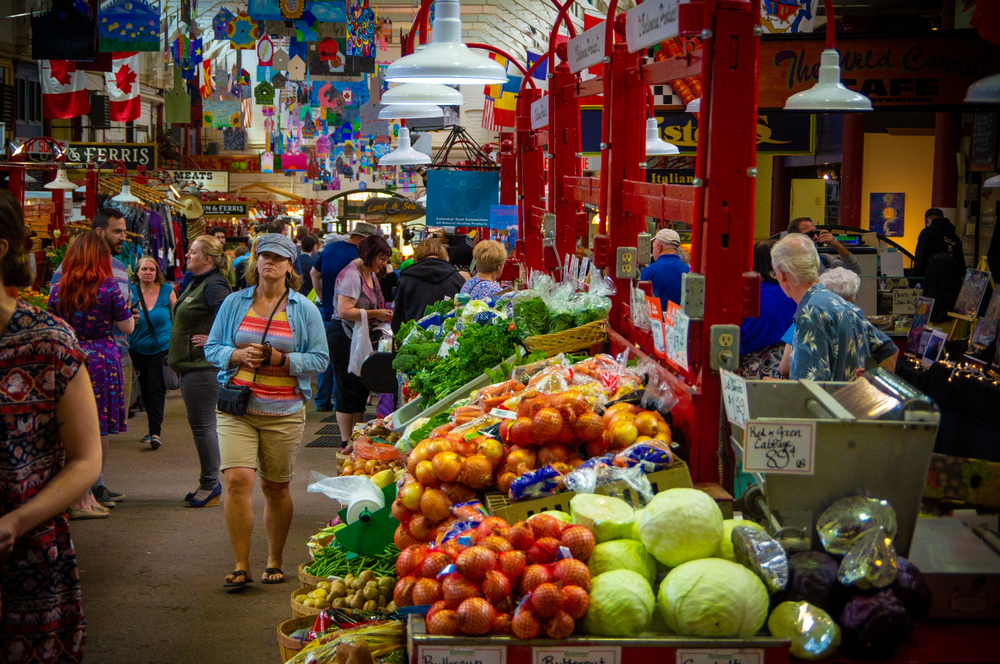
New Brunswick has three major cities:
- Saint John
- Moncton
- Fredericton
Saint John is the most modern and industrial of the three, as it’s a major port site (while the other two are known for their scenic landscapes).
The population of Saint John is approximately 130,000, including a small percentage of migrants. You’ll be greeted by English speaking communities, with only a third of the population speaking French.
Overall, New Brunswick’s surface area is mostly land and forests where wildlife is rampant, leaving you with plenty of space for fun outdoor activities with the family.
Quality of Life
If you’re into a simple, laidback lifestyle, Saint John could be your top choice. One notable highlight of Saint John is its affordable housing costs, starting at an average price of $168,000.
It’s considered to be one of the most inexpensive places to buy a mortgage-free house, giving you a pleasant yet affordable life. The cost of living is 10%-30%, which is relatively lower than other cities and the rest of the world.
Job Opportunities
Although it’s the most affordable city to buy a house, the salary is 15% less than average – so if you’re looking to pursue a high-paying job, it’s best to move west.
However, better work opportunities can be found in the metropolitan city of Saint John. Its economy is centered in timber and maritime industries, such as fishing and shipping. Shipbuilding has been on the rocks for Saint John, as it couldn’t compete with competitors.
Education
Getting quality education in Saint John is possible without having to pay high costs. You’ll find the University of New Brunswick in Saint John, being the oldest and largest English curriculum university.
High school in Saint John is publicly funded and offers an education with English and French immersion. You’ll also find several private institutions across Saint John.
Recreation
You’ll definitely enjoy the city’s charm, as it’s packed with parks, forests and amazing architecture. For art lovers, museums, theaters, and galleries are thriving in the city.
Transportation
Saint John City Transit, The Comex, and SMT Bus Lines can easily help you get around the city. Buses are usually available from 6 in the morning until midnight.
Alternatively, a taxi service is also an option, as you can easily call for one in among their several taxi operators. Traffic is normally not a problem in this slow-paced city, however, there are certain times where moose accidents occur.
Calgary, Alberta
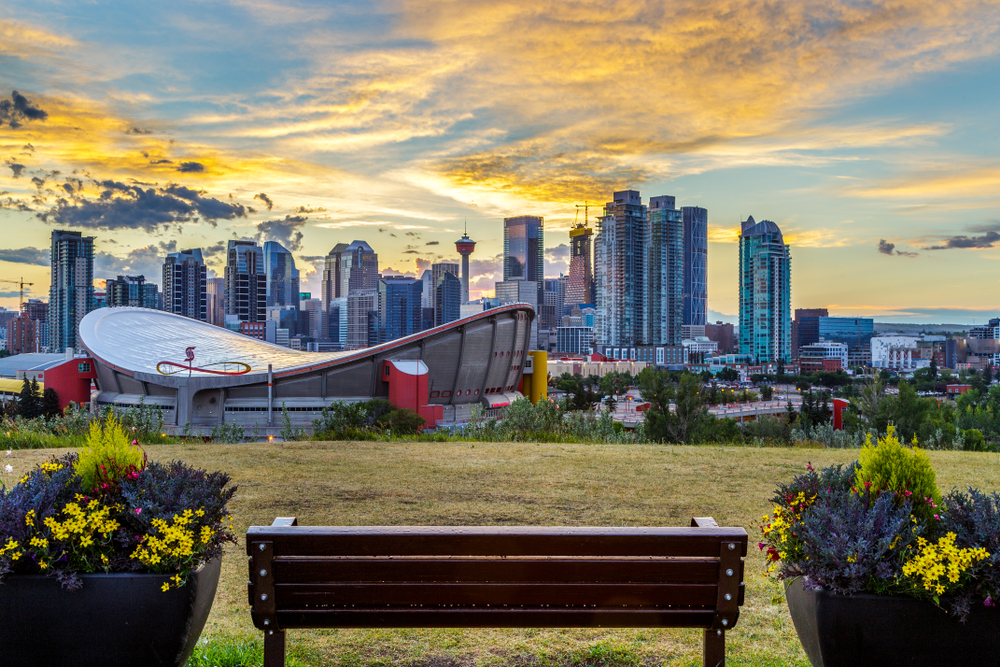
Calgary is the most populated city in Alberta, with a population of about 1.3 million. In recent years, it has gained top titles including one of the most livable and cleanest cities in the world and is considered to be among the wealthiest cities in Canada.
Calgary is a prairie province in Alberta that is covered in great plains of wheat. Although the weather is unpredictable, you can expect diverse weather that ranges from dry, to sunny and cool. It’s a great city for families, with low violent crime rates, many parks, and public transportation.
Quality of Life
Calgary was ranked among the top most livable cities based on several factors, including healthcare, infrastructure, and environment, to name a few. It’s also ranked as having Canada’s highest household income, with an average of $104,410/year.
It’s no surprise to see the most millionaires in this city, compared to others. The average price of a home in Calgary is in the range of $400,000-$500,000, with sizes much larger than other cities.
It’s worth noting that walking around the city on foot is convenient, with infrastructures like footbridges that link buildings and shops. You don’t have to worry about cold weather, as these bridges are heated for comfort.
In terms of crime rate, Calgary is rated above average compared to other major cities. Other than that, it remains relatively low in taxes and with a good healthcare system.
Job Opportunities
Calgary is a wealthy city with its oil industry being among the high-paying jobs. Alternatively, it’s common to find work opportunities in the public sector, healthcare, agriculture, education, transportation, technology, and construction.
The estimated unemployment rate in Calgary is about 8%.
Education
The education system of Alberta is well-developed, and your children can attend public schools for free. These public schools follow a standardized curriculum – which is also considered to be one of the best in Alberta.
Aside from public schools, catholic schools in Calgary are also major government-funded institutions. Based on statistics, schools in Calgary performed well in international tests and university entrance examinations.
Moreover, private and international schools are other alternatives for children that can range from CAD 3,000 to CAD 20,000 annually. For undergraduate education, the University of Calgary is a great choice.
Recreation
The Calgary Stampede is a yearly event that is most anticipated by locals and tourists.
On an ordinary day, families can explore historical sites and visit lovely parks and gardens with plenty of space for children to play around.
For a more adventurous weekend, the Rocky Mountains is easily accessible by car for only an hour’s drive.
If you’re a family with pets, you’d be glad to know that Calgary is home to 149 public off-leash areas for your furry pets to run around. You don’t have to worry about stray dogs and cats, as Calgary has strict regulations with off-leash pets and pet registration.
All in all, Calgary is the best place for huge parks, clean playgrounds, and bike pathways.
Transportation
Calgary has a superb transportation system. It houses the very first wind-powered public transport in North America called the C Train. From downtown Calgary to the suburbs, the C Train is the most convenient mode of transportation. It’s used regularly by over 40% of downtown workers.
However, traveling by car is still the most preferred mode of transportation in Calgary. If you own a car, several Park and Ride cars are available with a free plug-in block heater that is highly needed in winter months when preheating cars.
St. John’s, Newfoundland
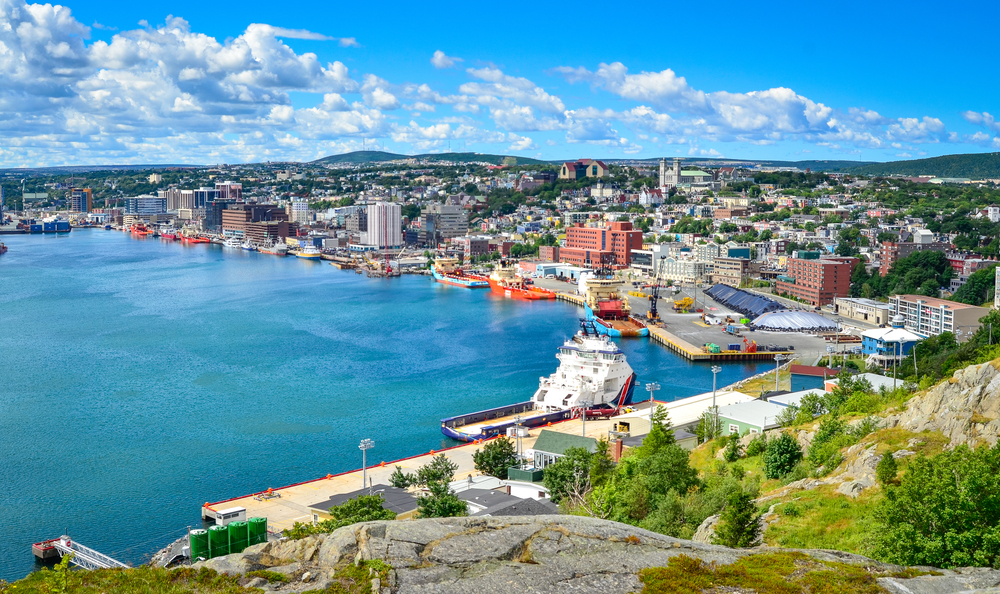
It may be the oldest city in North America, but St. John’s is packed with complete amenities that you’d normally find in big cities. You can definitely enjoy close-knit community life with your children at St. John’s.
It’s one of the most scenic cities in Canada, with its heritage sites and colorful houses in the downtown area. The city is one of the best places for great outdoor activities.
The weather is fairly continental, so you’ll experience cold winter and hot summer seasons.
Its population is about 108,000, which is comprised of 96% English speakers and 4% foreign language speakers. Out of the total population, only 29% are families with kids.
Quality of Life
The average household income for families in St. John’s averages $99,394. The median income may be low, but housing and costs of living are low as well.
The average price of a home in St. John’s is more than $400,000. The low costs make it easier for families to save up for vacations and a child’s education.
Undoubtedly, it’s very common to find affordable seafood at St. John’s, since it’s a big fishing town on the coast.
In terms of healthcare, residents benefit from the Provincial Medical Care Plan (MCP) which covers the cost of medical services. Local hospitals are available, including Health Sciences Center, St. Clare’s Mercy Hospital, and Janeway Children’s Hospital.
Job Opportunities
St. John’s has a range of job openings that mainly focuses on government, hospital, and university positions. In numbers, about 20,000 employees work in healthcare and 16,400 in business industries.
Additionally, the minimum hourly wage in Newfoundland is $12.15.
Education
St. John’s won’t disappoint in providing quality education in public and private institutions, from daycare to university education.
For young children, several daycares and early childhood education institutions are available and affordable. The estimated median daycare costs $933/month.
For further education, Memorial University, Marine Institute of Memorial University, and College of the North Atlantic are among the public institutions with quality education. Alternatively, your children can enroll in several private colleges and institutions.
Recreation
St. John’s boasts an abundance of outdoor activities including sailing, hiking and camping. Families can enjoy long walks on hiking trails while taking in the breathtaking landscapes.
This cosy maritime town is the place to be for coastal walks and fresh seafood. If your family loves going to the park, visit Bowring Park for playgrounds and Bannerman Park for a lovely afternoon family picnic.
Going around the city is like taking a walk in the past, as the places are remnants of history and the architecture of St. John’s is unlike any other.
If your children like the snow, snowfall averages 234cm every year.
Plus, don’t forget about their most awaited Twillingate Festival. Whatever the season is, there’s always something going on in this city with small-town feels.
Transportation
St. John’s has several modes of transportation to get you where you need to go. From buses to taxis and rentals, the city has got you covered.
The public bus transportation available is Metrobus and GoBus. Although there are numerous public transportations, riding a bike to get to places is still a popular choice for most residents, as you get to exercise while seeing the picturesque surroundings of the city.
If you travel by car, parking won’t be a problem as there are many parking services available, as long as you have the Park Card, a cashless mode of payment.
The Verdict
Moving to a new city is a major life decision for you and your family. You probably want to make sure that you’re leading your family down the right path.
There’s no easy way to tell which one is the best, as it depends on several variables. If you prefer a lower housing cost, go for Saint John, New Brunswick. For better high-paying jobs, Ottawa is the best.
With that being said, choose a city according to what you need and how it will suffice your expectations for your family. Once you’ve chosen your preferred city, it’s time to learn how to move into the city as a foreigner or resident.


